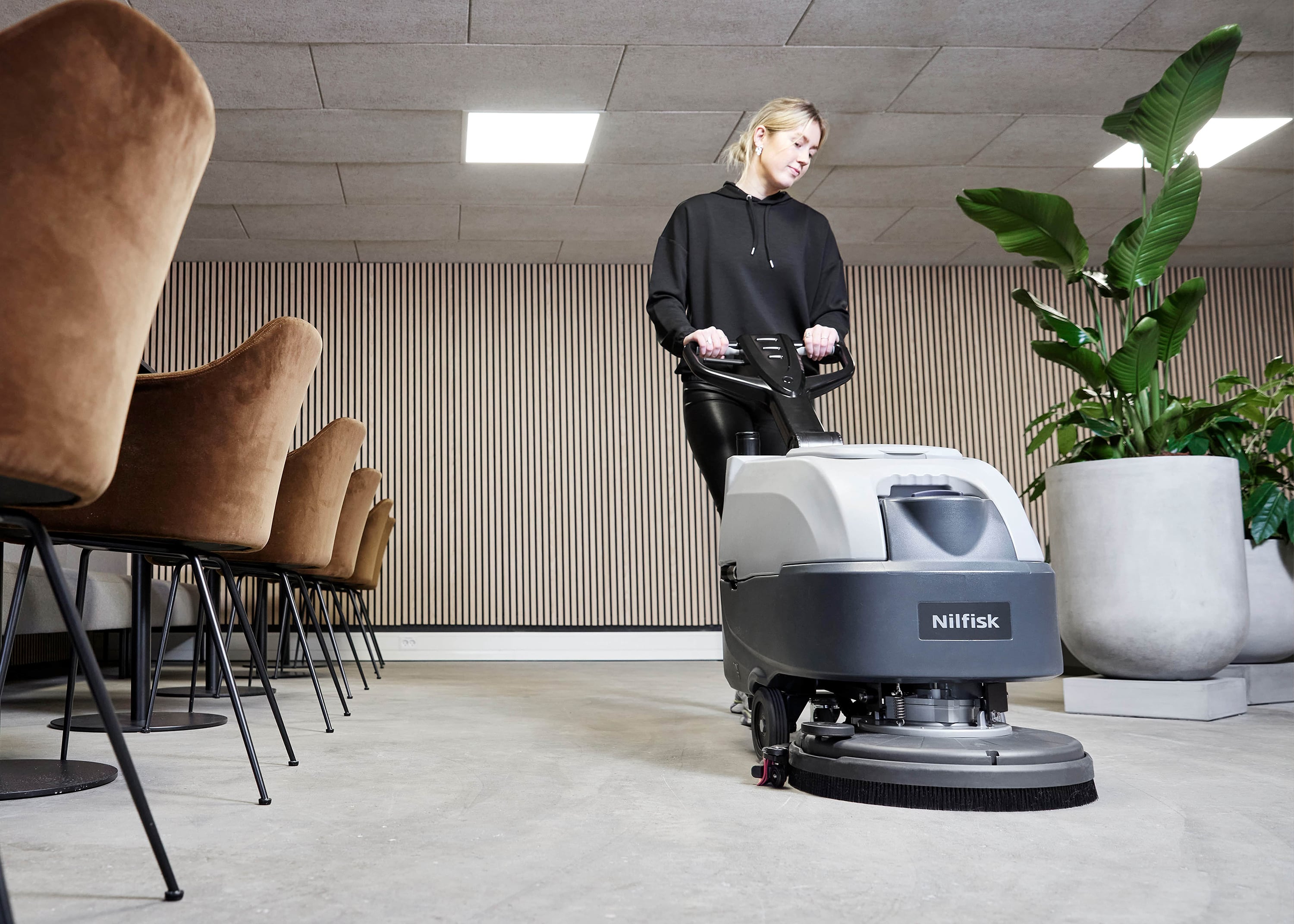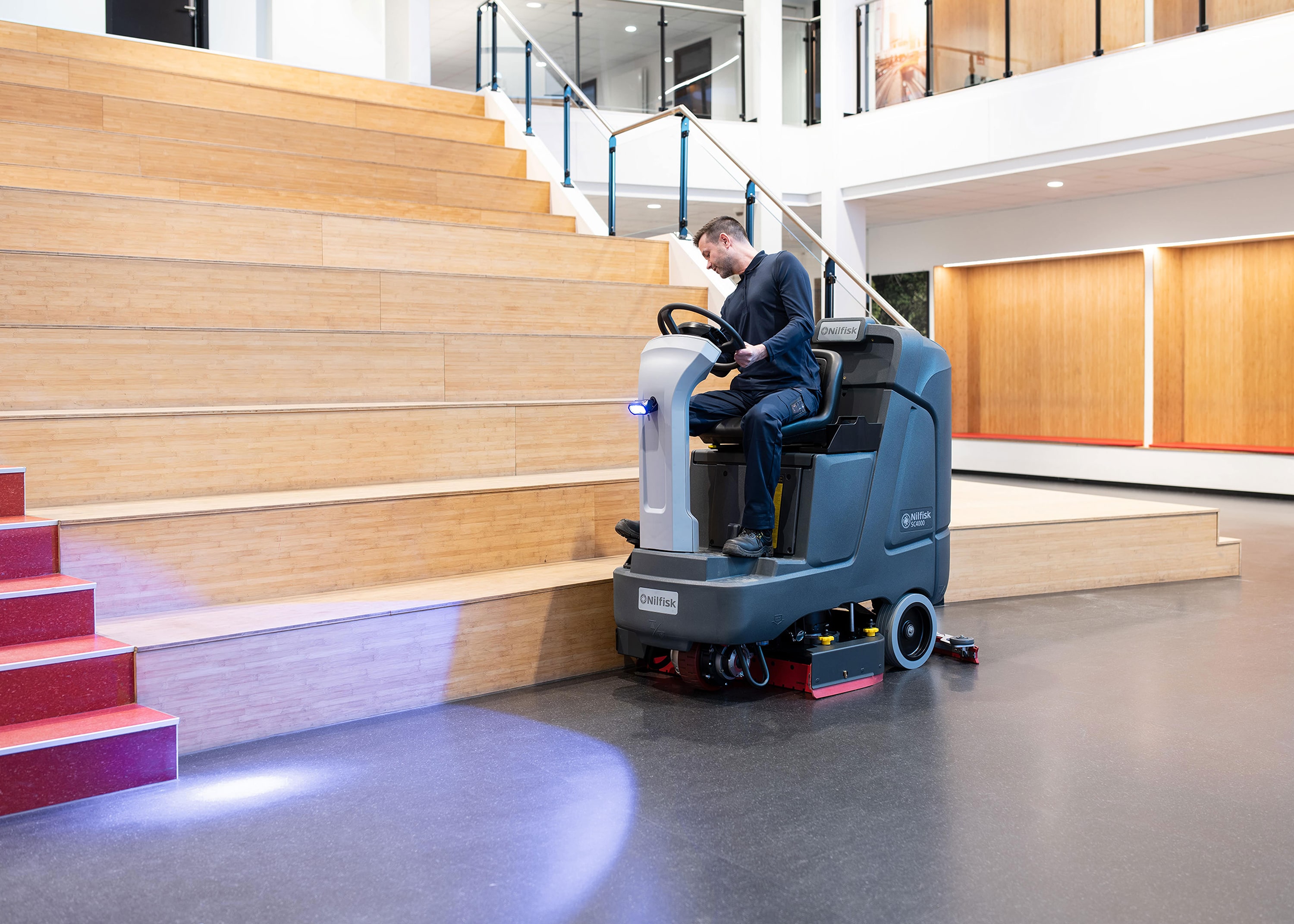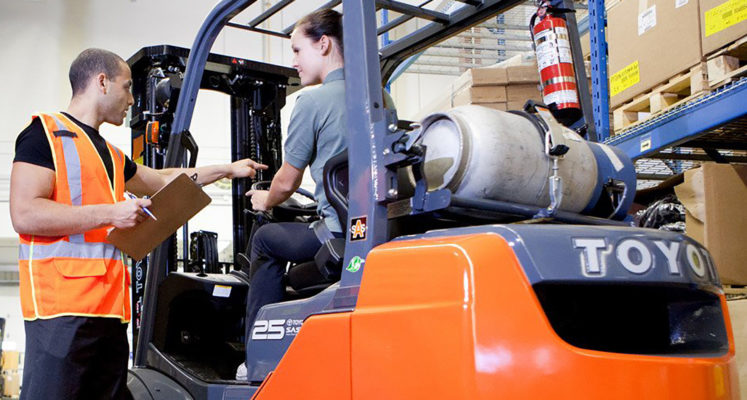When it comes to maintaining a clean and professional facility, the right floor cleaning equipment can make all the difference. Nilfisk, a trusted name in commercial and industrial cleaning solutions, offers both ride-on and walk-behind floor scrubbers—but how do you know which one is right for your space?
Here’s a breakdown of the key differences to help you make the best choice for your cleaning needs.
Walk-Behind Floor Scrubbers: Compact and Cost-Effective
Best for: Small to medium-sized spaces, tight layouts, and high-traffic areas.
Walk-behind scrubbers are ideal for facilities with narrow aisles, obstacles, or where maneuverability is a priority. These machines are generally more compact and affordable than ride-on models, making them a smart choice for retail stores, small warehouses, schools, and healthcare facilities.
Advantages:
-
Easier to transport and store
-
Lower upfront investment
-
Excellent for detail cleaning in smaller spaces
-
Less operator training required
Considerations:
-
Slower cleaning speeds
-
More physical effort for operators
-
Not ideal for large open areas
Ride-On Floor Scrubbers: Power and Productivity
Best for: Large facilities, warehouses, distribution centers, and big box retail environments.
Ride-on scrubbers offer high productivity with faster cleaning speeds and broader coverage areas. These machines allow operators to clean more square footage in less time, reducing labor hours and increasing efficiency.
Advantages:
-
Greater cleaning productivity
-
Reduced operator fatigue
-
Ideal for large, open spaces
-
Often come with higher-capacity tanks for fewer refills
Considerations:
-
Higher initial cost
-
Requires more space for turning and storage
-
May require operator certification or training
Which One Should You Choose?
The decision between a walk-behind and ride-on Nilfisk floor scrubber depends on your facility’s layout, square footage, budget, and staffing.
-
Choose a walk-behind if you need flexibility, affordability, and maneuverability in tighter spaces.
-
Go with a ride-on if you’re looking for speed, efficiency, and maximum cleaning power across large floor areas.
Still Not Sure? We Can Help!
At Southeast Industrial Equipment, we can help you assess your cleaning needs and recommend the best Nilfisk equipment for your facility. Whether you’re upgrading your current system or outfitting a new building, we’ve got you covered.
Contact us today to schedule a demo or get a quote on Nilfisk floor cleaning solutions!


